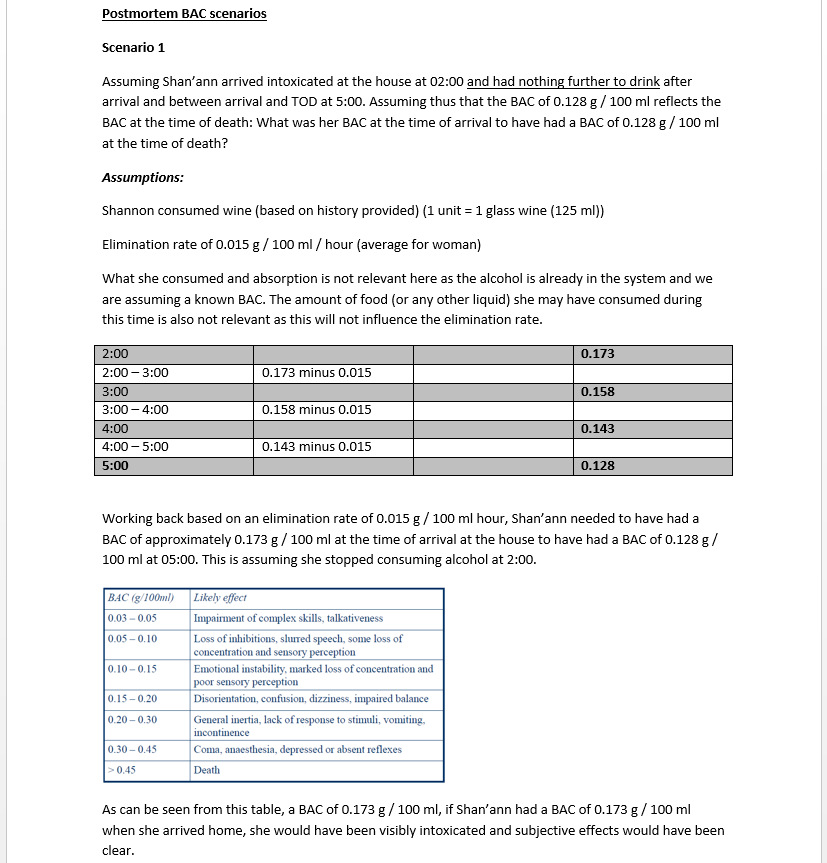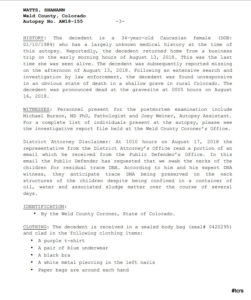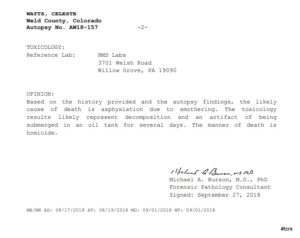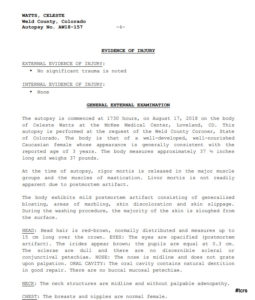Bill Finley, who runs the 411 YouTube channel, is one of the better, more informed commentators on the Chris Watts case. Finley apparently sent in a public records request shortly before sentencing in November 2018, and received the autopsy reports via FedEx which included several photos. It also appears the report he received had slightly more information than the one in the discovery file.
The relevant excerpt is provided below:

At 15:47 in Finley’s YouTube spiel, he brings up an element that isn’t in the autopsy report as we see it in the Discovery Documents. It has to do with Bella’s so-called “defensive wounds”:
[Reading from the report] “There is exterior evidence of injuries [to Bella]. There is a 13×3 cm area of vertical lacerations on her buttocks…and she had several defensive wounds on her hands [back sides] and forearms [outer edges] and the backs of her heels…also discoloration [bruising] of upper left shoulder…as well as a cut on the head. The autopsy report speculates that the cut on the head and missing hair is when Watts tried to shove [Bella] into the tank.”
Finley reckons the opening of the thief hatch was 15 inches. But this seems to be an error on his part.
I did contact Finley directly [see below tweetgrab] in an effort to get more information on the autopsy reports. While I don’t wish to leak photos, I would like to see them so that I can describe them, or get a description directly from Finley. Finley, as far as I can tell, doesn’t describe the images beyond saying “they ain’t pretty”.
Perhaps some of you might have have better luck getting a response than I did.


















































Recent Comments